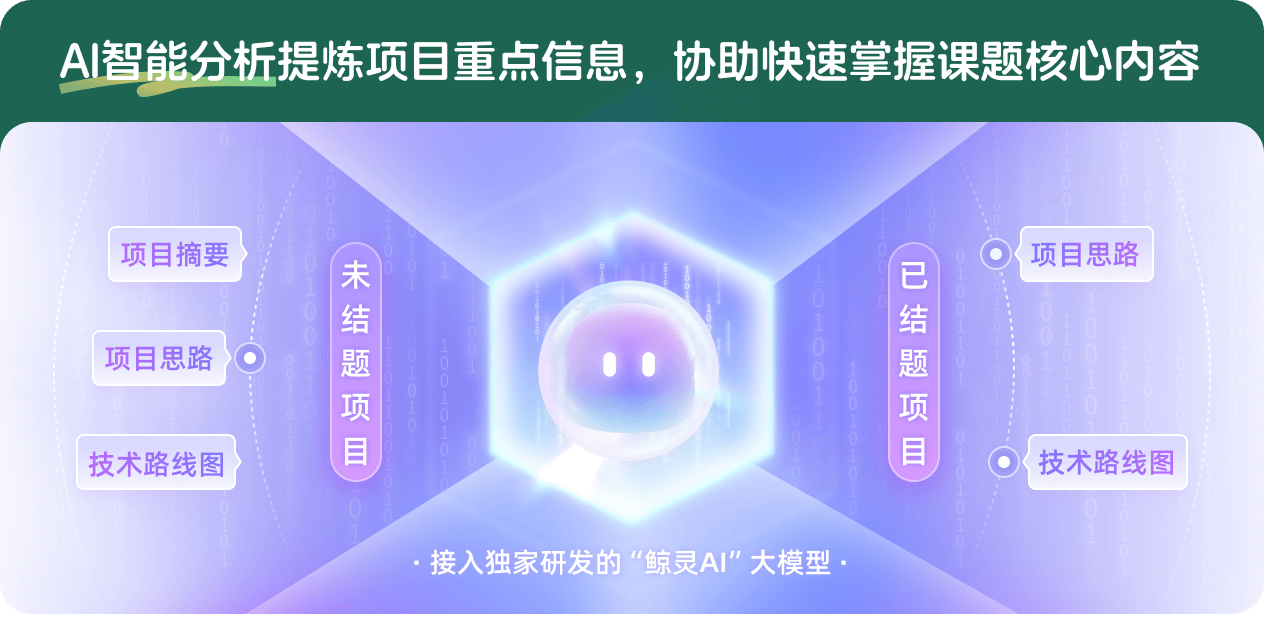功能性华溪蟹金属硫蛋白金属结合特异性与基因改造的研究
项目介绍
AI项目解读
基本信息
- 批准号:31672293
- 项目类别:面上项目
- 资助金额:61.0万
- 负责人:
- 依托单位:
- 学科分类:C0403.动物生理与行为
- 结题年份:2020
- 批准年份:2016
- 项目状态:已结题
- 起止时间:2017-01-01 至2020-12-31
- 项目参与者:马文丽; 张左兵; 孙敏; 刘娜; 王茜; 井维鑫; 李保珍; 郎朗; 周妍英;
- 关键词:
项目摘要
Metallothioneins (MTs) play a major role in metal detoxification, homeostasis and/or scavenging free radicals and other important functions in all organisms. Cadmium, with characteristics of teratogenic, carcinogenic and mutagenic, is considered to be one of the most toxic and industrial pollutants in the environment. It enters the body through the food chain and cause directly harm to human health. Carrying the metal-binding characterization, MT is considered to be one of the most important detoxification protein and lots of investigation has been done on it. In a previous study, a novel full length MT gene was isolated from the freshwater crab (Sinopotamon henanense), a species widely distributed in Shanxi and Henan Provinces of China, and the MT has been expressed as fusion with SUMO to investigate potential application in heavy metal bioremediation. Now in this study, in order to establish a novel secreted expression pattern of S. henanense MT, firstly it was already expressed using the alkaline phosphatase promoter (phoA) fusing with only 6 his-tag in Escherichia coli. The recombinant 6 His-MT induced at low concentration of phosphate was purified by Ni2+ affinity chromatography and analyzed by UV absorbance spectrometry and western blot to investigate the hydroxyl radical scavenging ability. Secondly, in order to elucidate the metal binding characters of S. henanense MT, recombinant 6 His-MT will be reconstituted with Zn2+, Cu2+ and Cd2+ in vitro and the corresponding metal complexes will be analyzed by means of inductively coupled plasma atomic emission spectroscopy, electrospray ionization time-of-flight mass spectrometry and circular dichroism spectroscopy. Moreover, on the basis of constructed SUMO-MT, mutants will be constructed using site-directed mutagenesis techniques with the amino acid substitutions N2C and S36C. E. coli expressing SUMO-MT and these single-mutant proteins exhibited enhanced metal tolerance and higher accumulation of metal ions than control in cells. Finally, two recombinant S. henanense MT will be produced by SUMO fusion system and phoA secretion expression system in E. coli and than subsequently will be used as immunogen and detecting antigen to screen antibodies produced by hybridoma cells against S. henanense MT. The titers of mAbs will be measured by indirect ELISA and the specificities of the mAbs was evaluated by Western blot and Dot-ELISA assays. Also to utilize the MT protein as a useful biomarker for environmental contamination, we will develop the moloclonal antibody-based enzyme-linked immunosorbent assay in the crab and the recombinant His-MT protein will be purified as a standard. Through the fusion protein of recombinant His-MT protein, analysis of biological functions in the cellular level will be done. And the mechanism of how to induce expression of MT could be revealed through the tissue and subcellular distribution and orientation.Establishment of the highly purity recombinant MT protein of native characteristics fusion with a small 6 His-tag in low cost would improve its function study and wide applications in medicine, food and other people's livelihood areas. Meanwhile, the present study could help to elucidate the metal binding characters of the crab and in further elucidate the mechanism of how the crab detoxifies heavy metals and provide a scientific basis for environment bioremediation of heavy metal pollution using the over-expression of the crab MT and mutant proteins. And it provide a scientific basis for development of an ELISA in determination of MT and would be helpful to better understand the molecular response in environmental pollutants and provide the scientific basis for MT as biomarkers in water heavy metals monitoring.
金属硫蛋白(Metallothionein, MT)在生物体内具有重金属解毒、参与必需金属元素平衡、清除自由基等多种重要功能。镉的致畸、致癌、致突变特点,被认为是最毒的环境和工业污染物之一。本项目利用phoA原核表达系统,重组制备华溪蟹小分子功能性MT。经体外重组获得不同华溪蟹MT-金属复合物,选择电感耦合等离子体原子发射光谱法、电喷雾飞行质谱分析及圆二色谱等技术,掌握MT结合金属种类、数量及空间构象,揭示MT金属结合特性。运用定点突变技术,对华溪蟹MT一级结构进行基因改造,提高MT金属结合能力。以前期制备的SUMO-MT为免疫蛋白,以小分子功能性MT为筛选蛋白和标准蛋白,完成抗体制备,建立酶联免疫测定方法。分析重组表达MT融合蛋白的功能。掌握MT在组织与亚细胞的分布及定位特点。旨在深刻阐明MT结合不同金属的特性与重金属解毒分子机制,为MT作为生物标识物实现水体重金属监测提供科学依据。
结项摘要
金属硫蛋白(MT)具重金属解毒、清除自由基等多种功能。镉通过食物链进入并危害人体健康。本项目研究结果旨在深入阐明MT结合不同金属的特性与解毒机制,为实现水体重金属监测提供科学依据。.通过对河南华溪蟹MT的一级结构进行基因改造,构建了两种突变体SUMO-MTt1(N2C)、SUMO-MTt2(S36C),提高了金属结合能力。含有ShCdMT、ShCuMT的重组菌体对Cd、Cu、Zn、Pb等具有耐受性,在大肠杆菌合成的Cd-ShCdMT具有致密且稳定的三维折叠结构。在体外,ShCdMT能螯合6个Cd2+、7个Cu2+、6个Pb2+,ShCdMT对金属离子结合的稳定性:Cu- > Cd- > Pb- > Zn-ShCdMT,ShCdMT对Cd2+的结合具有偏好性,属于Cd-Specific MT亚型,具有无脊椎动物MT典型的β/ β结构域,能够与二价金属离子形成M6Ⅱ-ShCdMT配位模式。转ShCuMT工程菌对不同浓度的Cd2+、Cu2+、Zn2+均具耐受性,且对Cu2+的耐受作用最明显。ShCuMT表现了较强的金属离子结合特性,ShCuMT与Cd2+、Zn2+和Cu2+结合的稳定性为:Cu2+> Cd2+> Zn2+。体外apo-ShCuMT能够配位6个Cd2+、3个Zn2+和10个Cu2+,ShCuMT是一种不含保守结构域、不含信号肽,但包含多个过渡金属结合位点的亲水性非跨膜蛋白。ShCdMT、ShCuMT均具有清除羟自由基和提高总抗氧化的能力。串联MTs和其工程菌都具有重金属污染生物修复的巨大潜力,实现了2MT、3MT串联体的SUMO融合表达,菌体的富集量依次为:转3MT工程菌 ˃ 转2MT工程菌 ˃ 转MT工程菌 ˃ 野生菌,为基因工程技术大规模制备MT奠定了基础。同时,利用MT单克隆抗体建立了双抗体夹心ELISA检测方法。.构建了含河南华溪蟹MT基因的转化沼泽红假单胞菌,并诱导表达了目的蛋白。正常菌和转化菌的总吸附率变化与时间、pH成正比,与初始浓度成反比。Cd、 Cu,转化菌的总吸附率大于正常菌;Zn则相反且存在显著差异。转化菌吸附重金属Cd、Zn、Cu的表面官能团、表面结构均发生了改变。不同的亚细胞组分中Cd的分布有差异,热稳定蛋白部分镉分布最多,细胞碎片和细胞核部分镉分布较少。
项目成果
期刊论文数量(19)
专著数量(0)
科研奖励数量(1)
会议论文数量(0)
专利数量(0)
河南华溪蟹2种C型凝集素原核表达及多克隆抗体的制备
- DOI:--
- 发表时间:2018
- 期刊:山西农业科学
- 影响因子:--
- 作者:赵芳芳;王兰
- 通讯作者:王兰
镉胁迫对河南华溪蟹两种C型凝集素免疫应答的影响
- DOI:--
- 发表时间:2019
- 期刊:水生生物学报
- 影响因子:--
- 作者:赵芳芳;郎朗;张左兵;王兰
- 通讯作者:王兰
含镉量子点的毒性研究进展
- DOI:--
- 发表时间:2020
- 期刊:中国细胞生物学学报
- 影响因子:--
- 作者:王二梦;刘静;王兰
- 通讯作者:王兰
Tandem oligomeric expression of metallothionein enhance heavy metal tolerance and bioaccumulation in Escherichia coli
金属硫蛋白的串联寡聚表达增强大肠杆菌的重金属耐受性和生物蓄积性
- DOI:10.1016/j.ecoenv.2019.06.022
- 发表时间:2019-10-15
- 期刊:ECOTOXICOLOGY AND ENVIRONMENTAL SAFETY
- 影响因子:6.8
- 作者:Ma, Wenli;Li, Xuefen;Wang, Lan
- 通讯作者:Wang, Lan
NAC对河南华溪蟹卵巢镉氧化损伤的缓解作用
- DOI:--
- 发表时间:2017
- 期刊:农业环境科学学报
- 影响因子:--
- 作者:陈红苗;许鹏;吴中强;井维鑫;王兰
- 通讯作者:王兰
数据更新时间:{{ journalArticles.updateTime }}
{{
item.title }}
{{ item.translation_title }}
- DOI:{{ item.doi || "--"}}
- 发表时间:{{ item.publish_year || "--" }}
- 期刊:{{ item.journal_name }}
- 影响因子:{{ item.factor || "--"}}
- 作者:{{ item.authors }}
- 通讯作者:{{ item.author }}
数据更新时间:{{ journalArticles.updateTime }}
{{ item.title }}
- 作者:{{ item.authors }}
数据更新时间:{{ monograph.updateTime }}
{{ item.title }}
- 作者:{{ item.authors }}
数据更新时间:{{ sciAawards.updateTime }}
{{ item.title }}
- 作者:{{ item.authors }}
数据更新时间:{{ conferencePapers.updateTime }}
{{ item.title }}
- 作者:{{ item.authors }}
数据更新时间:{{ patent.updateTime }}
其他文献
信息披露视角下政府补贴对绿色创新的影响:从“无的放矢”到“对症下药”
- DOI:--
- 发表时间:2020
- 期刊:科技进步与对策
- 影响因子:--
- 作者:王旭;杨有德;王兰
- 通讯作者:王兰
长江华溪蟹-actin基因cDNA扩增及分子系统发育初步分析
- DOI:--
- 发表时间:--
- 期刊:上海海洋大学学报
- 影响因子:--
- 作者:高爱保;王兰;袁慧
- 通讯作者:袁慧
城市再开发中健康影响评估的应用——以美国亚特兰大市环线复兴项目为例
- DOI:--
- 发表时间:2017
- 期刊:规划师
- 影响因子:--
- 作者:张雅兰;王兰
- 通讯作者:王兰
自组装修饰在不同细胞系中对聚酰胺-胺介导的基因递送的影响
- DOI:--
- 发表时间:2012
- 期刊:中国新药杂志
- 影响因子:--
- 作者:王兰;马茗舒;闫冬;张小宁
- 通讯作者:张小宁
基于有限元仿真模拟检测软骨退变
- DOI:--
- 发表时间:2013
- 期刊:医学信息
- 影响因子:--
- 作者:王兰;张文;杨惠林;罗宗平
- 通讯作者:罗宗平
其他文献
{{
item.title }}
{{ item.translation_title }}
- DOI:{{ item.doi || "--" }}
- 发表时间:{{ item.publish_year || "--"}}
- 期刊:{{ item.journal_name }}
- 影响因子:{{ item.factor || "--" }}
- 作者:{{ item.authors }}
- 通讯作者:{{ item.author }}

内容获取失败,请点击重试

查看分析示例
此项目为已结题,我已根据课题信息分析并撰写以下内容,帮您拓宽课题思路:
AI项目摘要
AI项目思路
AI技术路线图

请为本次AI项目解读的内容对您的实用性打分
非常不实用
非常实用
1
2
3
4
5
6
7
8
9
10
您认为此功能如何分析更能满足您的需求,请填写您的反馈:
王兰的其他基金
镉引起溪蟹糖和蛋白质等物质代谢异常的高血糖激素和应激蛋白基因调控的分子机制研究
- 批准号:31272319
- 批准年份:2012
- 资助金额:15.0 万元
- 项目类别:面上项目
镉诱导金属硫蛋白在华溪蟹组织细胞中的定位与原核表达
- 批准号:30970361
- 批准年份:2009
- 资助金额:32.0 万元
- 项目类别:面上项目
镉诱导溪蟹主要组织器官细胞凋亡及分子机制研究
- 批准号:30870267
- 批准年份:2008
- 资助金额:32.0 万元
- 项目类别:面上项目
镉诱导华溪蟹金属硫蛋白的分离纯化与基因克隆
- 批准号:30640051
- 批准年份:2006
- 资助金额:10.0 万元
- 项目类别:专项基金项目
重金属对华溪蟹组织器官抗氧化酶的影响及遗传毒性
- 批准号:30570194
- 批准年份:2005
- 资助金额:26.0 万元
- 项目类别:面上项目
华溪蟹金属硫蛋白研究
- 批准号:30470254
- 批准年份:2004
- 资助金额:8.0 万元
- 项目类别:面上项目
镉、铅对溪蟹主要组织器官遗传物质的影响
- 批准号:30340043
- 批准年份:2003
- 资助金额:8.0 万元
- 项目类别:专项基金项目
重金属对溪蟹主要组织在细胞和分子水平的影响
- 批准号:30070092
- 批准年份:2000
- 资助金额:14.0 万元
- 项目类别:面上项目
相似国自然基金
{{ item.name }}
- 批准号:{{ item.ratify_no }}
- 批准年份:{{ item.approval_year }}
- 资助金额:{{ item.support_num }}
- 项目类别:{{ item.project_type }}
相似海外基金
{{
item.name }}
{{ item.translate_name }}
- 批准号:{{ item.ratify_no }}
- 财政年份:{{ item.approval_year }}
- 资助金额:{{ item.support_num }}
- 项目类别:{{ item.project_type }}




















